Above: Bees busy at work on their honeycomb, producing the sticky sweetener we all love.
On October 21, 1857, three hives of Apis mellifera honey bees that had been ordered by the Royal Hawaiian Agricultural Society were put aboard the bark Fanny Major in San Jose, California. The voyage to Honolulu took 18 days, and the hives arrived in good condition. The Society paid $100 apiece for them and placed them in the care of Dr. William Hillebrand, a German physician and botanist, who lived in Nuuanu Valley.
By the following year, the three original hives had increased to nine. Over the next few decades, feral bee colonies and hives owned by a few hobbyists got established, but it wasn’t until the 1890s that entrepreneurs saw the potential of commercial honey production.
In 1894, the Sandwich Island Honey Company exported eight gallons of honey to the U.S. Mainland. Just three years later, 109,000 pounds were shipped by various producers, primarily to markets in Germany and the United Kingdom.
Today, there are dozens of honey companies statewide. Some are small, family-run producers; others are large-scale operations with thousands of hives in multiple locations. Hawaii’s bee farmers produce more than 100 pounds of honey per hive per year—the highest yield in the nation, according to the U.S. Department of Agriculture.
Here’s how you can learn more about the bee-dazzling golden sweetener.
1. Hawaiian Honey Challenge
Hilo, Hawaii IslandHawaiianHoneyChallenge.com
The annual Hawaiian Honey Challenge provides a way for local beekeepers to receive recognition for their products, spotlights the wide array of quality honey being produced in the Aloha State and raises awareness about what people can do to protect honey bees, which pollinate some 80% of the nuts, grains, fruits and vegetables in the United States. About one third of the food Americans eat is directly or indirectly due to honey bee pollination.
All Hawaii beekeepers can enter the competition. The entries they submit must be harvested from their own apiaries, can’t be heated during extracting or bottling and must not be blended, contain any additives or flavorings or be processed in any way. Judges chosen for their honey and/or culinary expertise conduct a formal blind tasting, giving points for aroma, taste, texture and clarity.
The public has a chance to weigh in, too. An informal taste testing for the People’s Choice awards is held at Mokupapapa Discovery Center, 76 Kamehameha Ave in Hilo on the first Friday in November, which coincides with the town’s big Black and White street party. Between 5:30 and 9 p.m., they can sample 60 to 90 honeys, cast their votes, view sample hives and collect honey recipes. Honey and beeswax products are available for sale, and beekeepers are on hand to answer questions.
Winners of the formal judging and the People’s Choice awards are announced about two weeks after the Mokupapapa event.
2. Family Day: Pollinators
Oahu Urban Garden CenterPearl City, Oahu
The University of Hawaii Master Gardeners’ volunteer Bee Hui sponsors this educational family-friendly event every year on the second Saturday of June. Attendees learn about beekeeping equipment, watch a live hive demonstration, see how honey is extracted, taste different honeys, view a display on the native yellow-faced bee and make a simple bee hotel, a place for bees who don’t live in a colony to nest. These bees don’t make honey; however, they are important pollinators for flower and vegetable gardens.
Several companies offer behind-the-scenes tours of their beekeeping operations, including an explanation of bee biology, societal structure and life cycle; bees’ role in agriculture; how they make honey; and hive care and maintenance. You’ll also get up-close looks at observation hives.
On some tours, you’ll put on a protective suit, open a hive and pull out a frame to see bees busy at work and honey in its purest form. The visit usually ends with a tasting session and, perhaps, a little jar of honey to take with you. Call or check the websites for more information.
Hawaii Island
1. Bee Mauna Kea
Mauna Kea Beach ResortKohala Coast, Hawaii Island
(808) 882-5707
This tour is available only to guests of the Mauna Kea Beach Hotel or The Westin Hapuna Beach Resort.
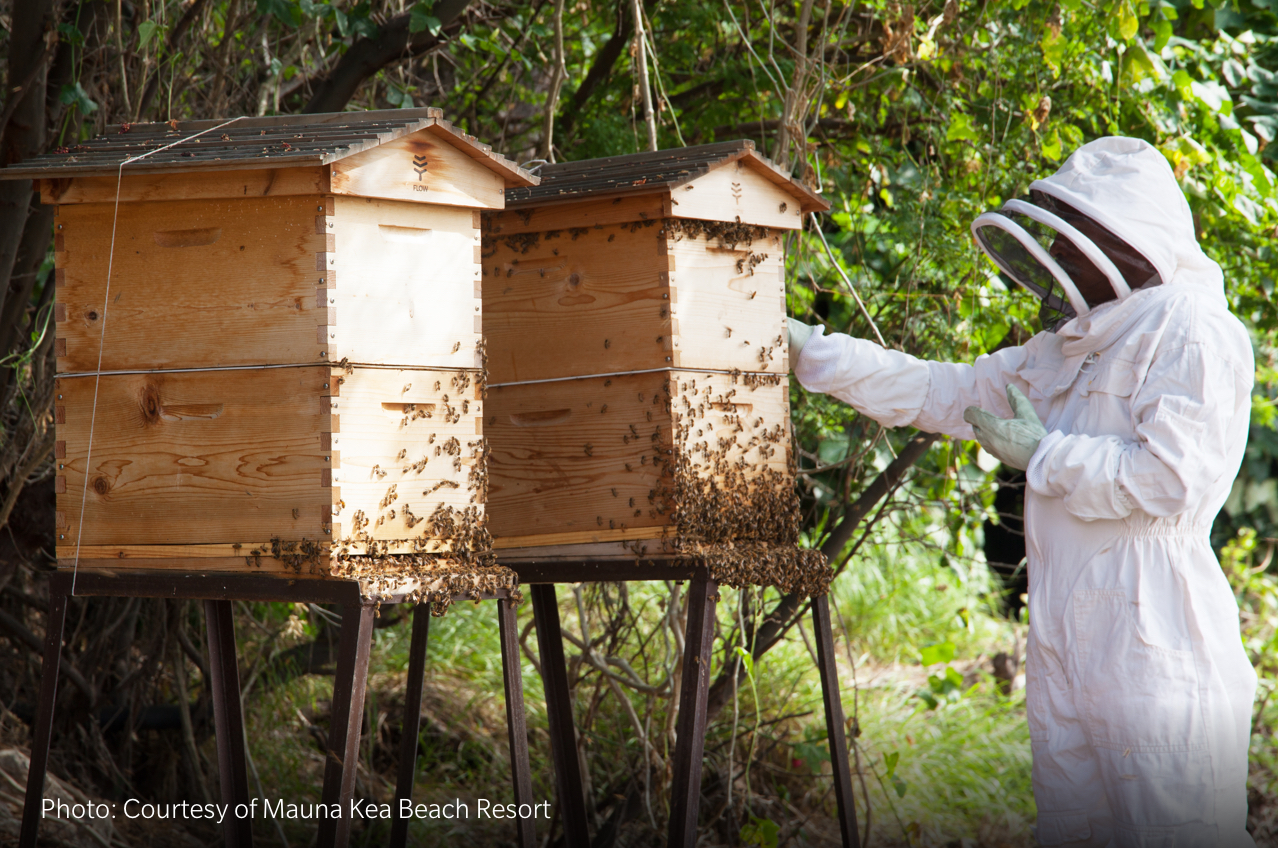
2. Beekeeping Tour
Big Island BeesCaptain Cook, Hawaii Island
BigIslandBees.com
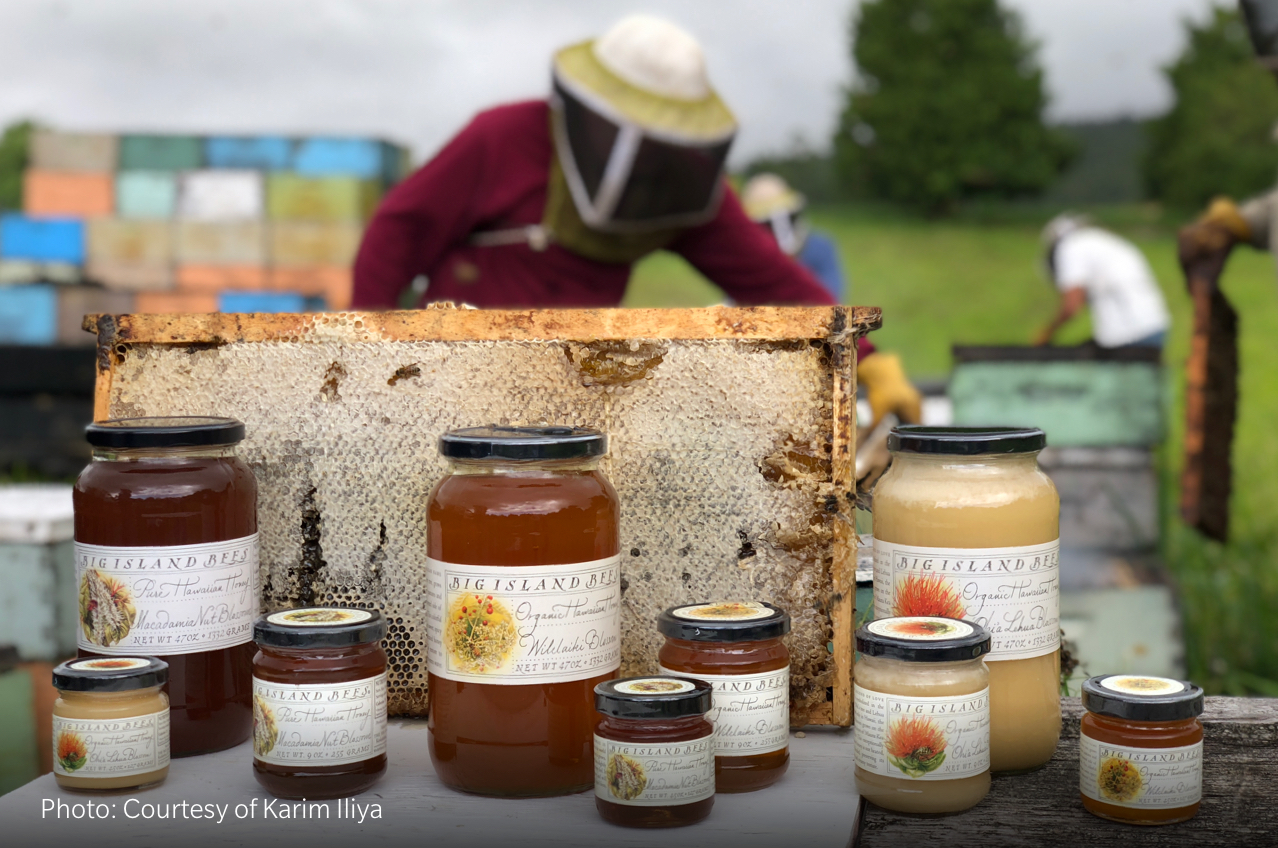
3. Botanical Garden & Bee Tour
Fairmont OrchidKohala Coast, Hawaii island
(808) 887-7368
This tour is available only to guests of the Fairmont Orchid.
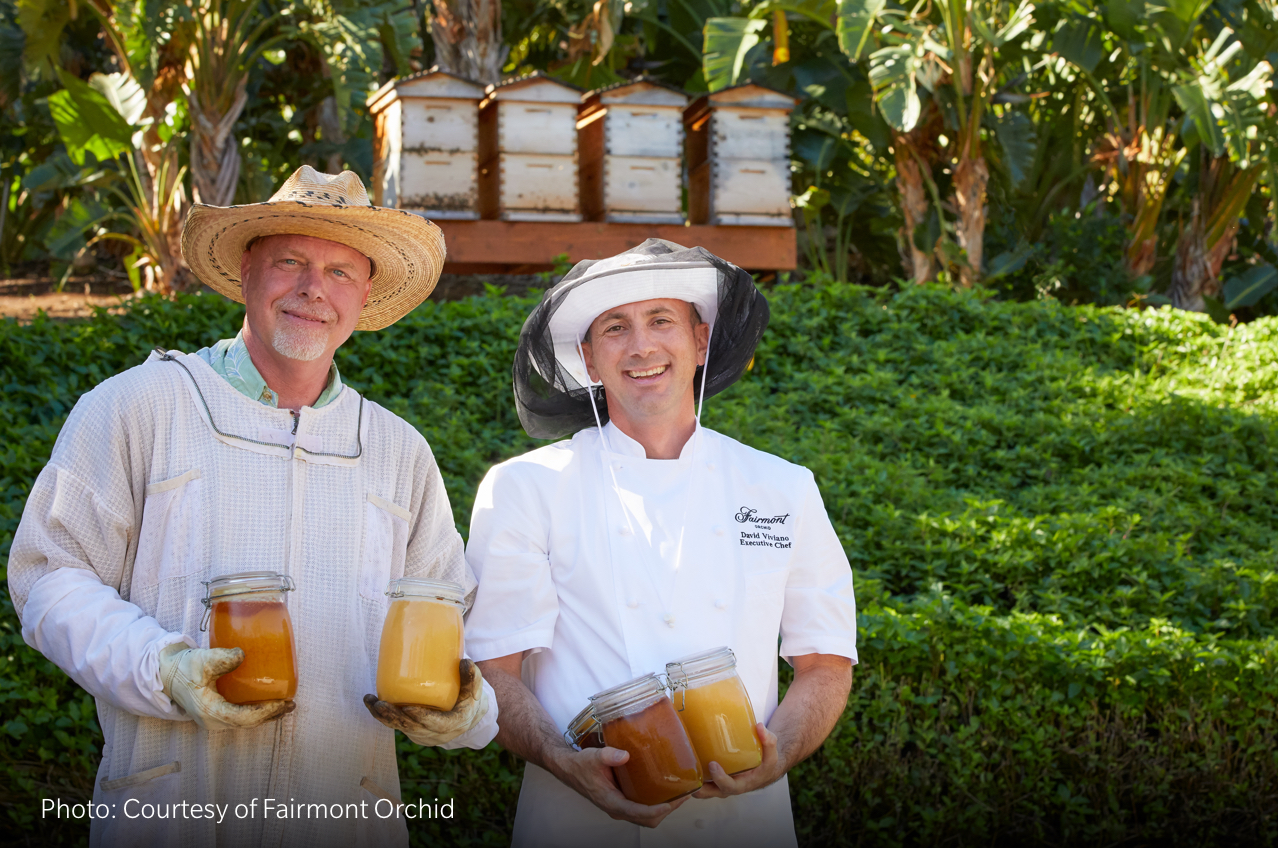
Maui
1. Hive Mind Maui
Makawao, MauiHiveMindMaui.com
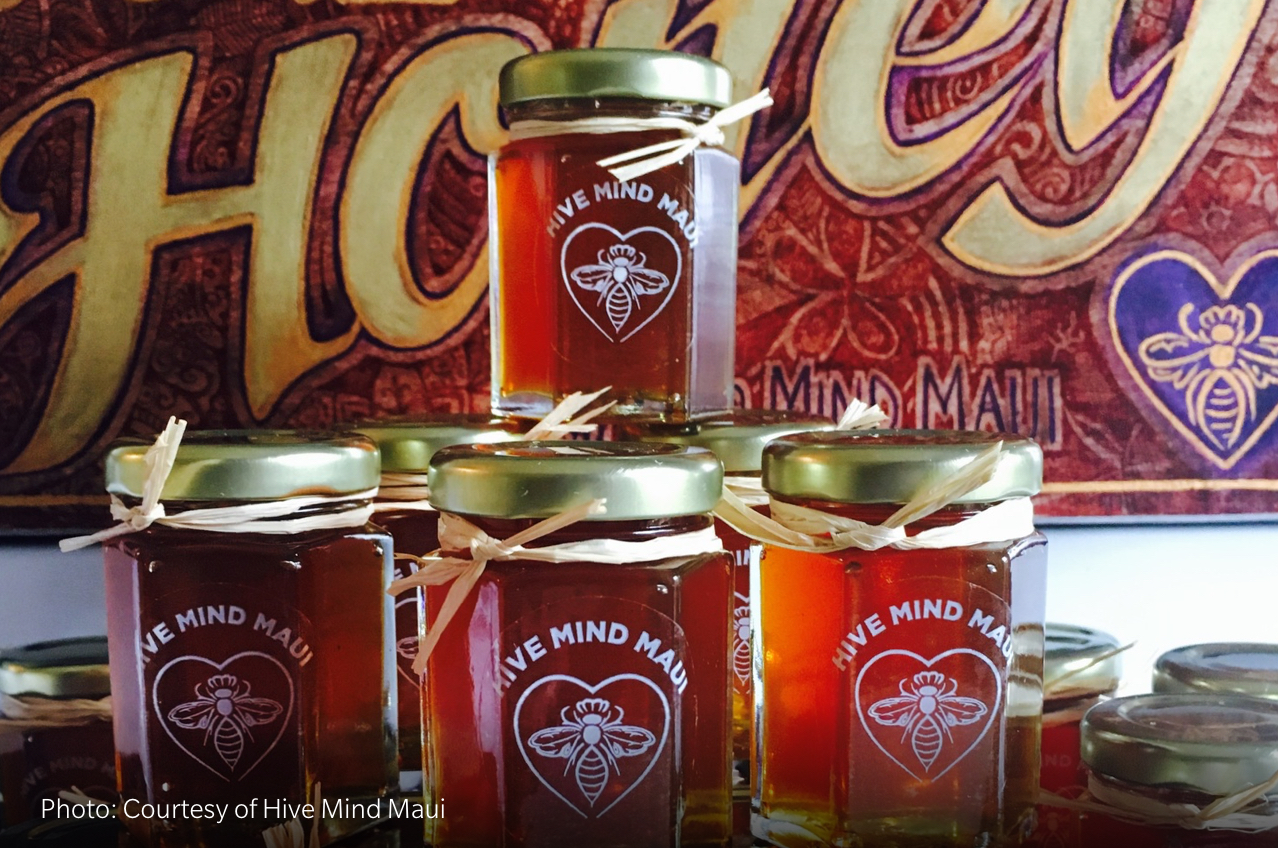
2. Maui Bees Farm Tour
Kula, MauiMauiBees.com/Farm-Tours
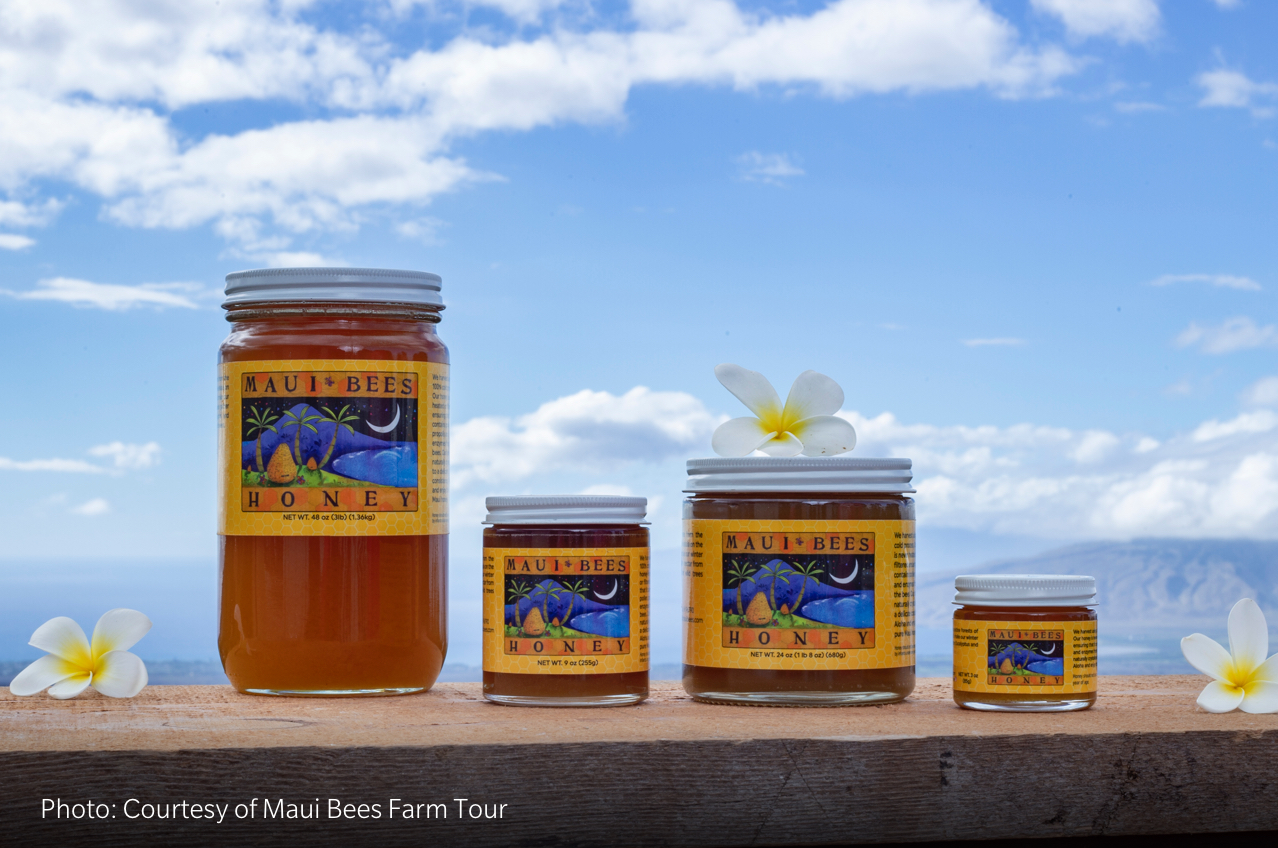
Oahu
1. Beelieve Hawaii Honey Bee Tour
Waimanalo, OahuBeelieveHawaii.com
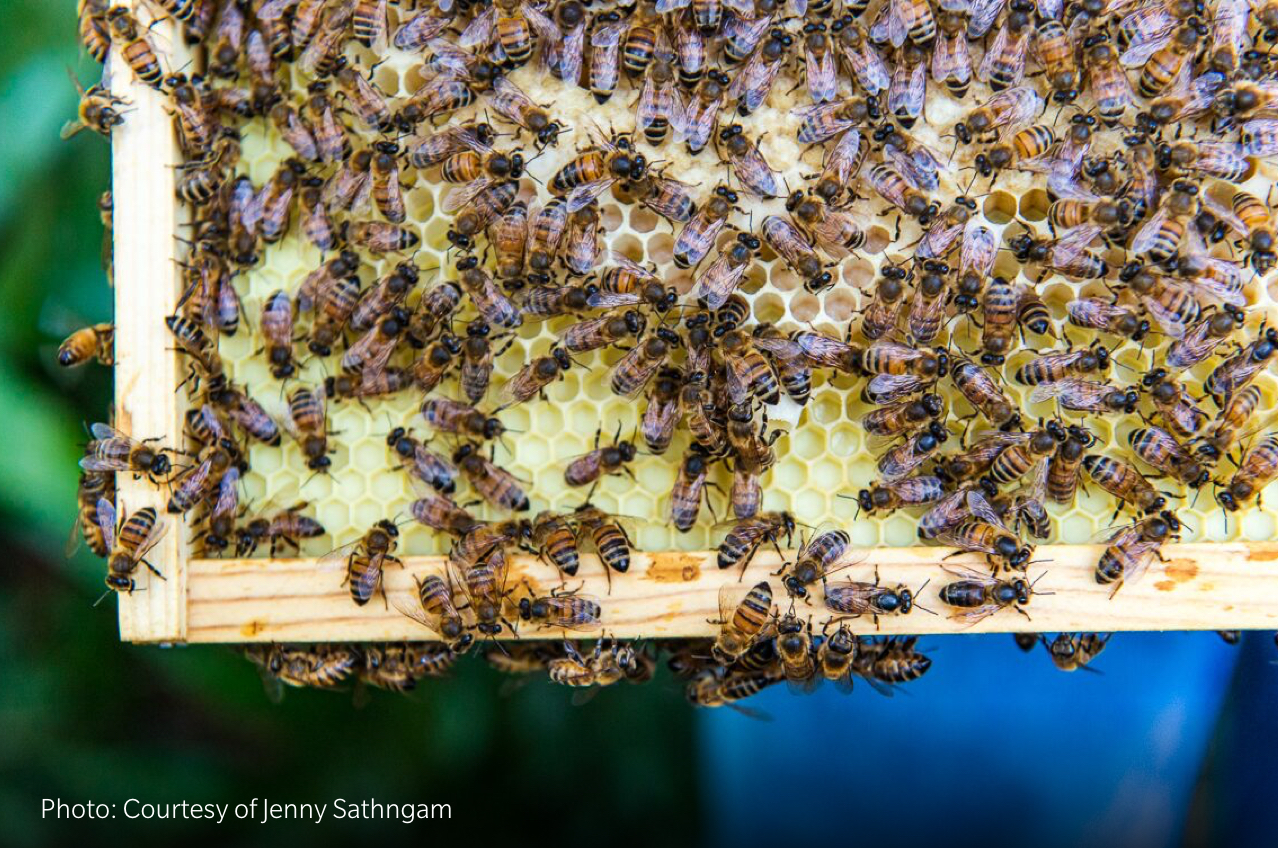
Kauai
1. Beekeeping Adventure by Kauai Nectar
Kapaa, KauaiBit.ly/Bee-Experience
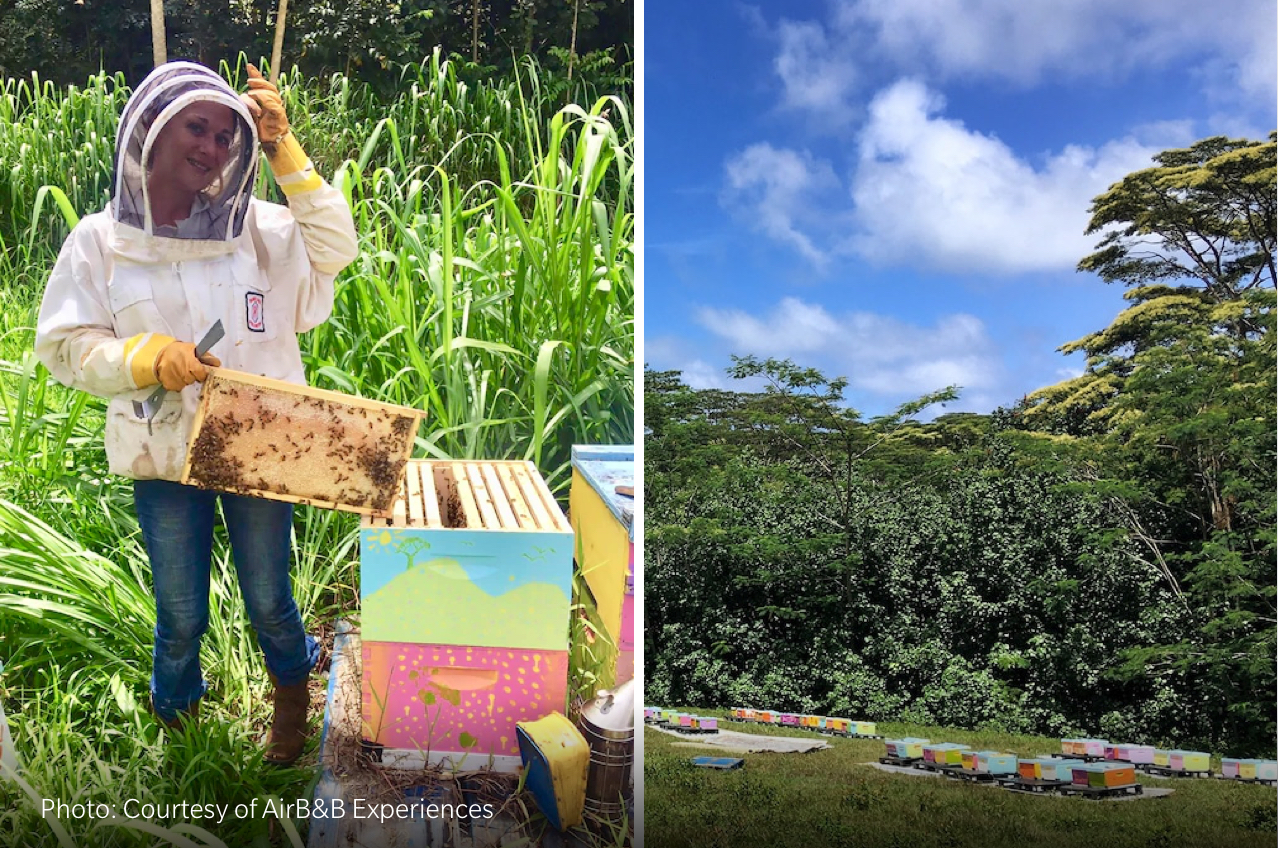
To learn more about bees, beekeeping and honey production, consider signing up for these classes and programs. You can also get more information about Hawaii’s honey industry by contacting the following organizations:
• Hawaii Beekeepers’ Association (HawaiiBeekeepers.org)
• Big Island Beekeepers Association (BigIslandBeekeepers.com)
• Kauai Beekeepers Association (KauaiBeekeepersAssociation.com)
Hawaii Island
1. Adopt-a-Beehive with Alan Wong
Panaewa, Hawaii IslandHilo.Hawaii.edu/AdoptABeehive
In 2011, renowned local chef Alan Wong partnered with the University of Hawaii at Hilo to launch this program, which offers 65 hives for adoption at the college’s 110-acre farm in Panaewa, five miles from campus. Mapuhonehone (“the wafting of the sweet smell of honey”), a one-acre garden at the farm, contains a model beehive owned by Chef Wong and bee-friendly features such as plants that provide nectar for bees year-round.
As an Adopt-a-Beehive participant, you’ll receive reports and photos of your hive, honey and honey products (the latter produced by beekeeping students) and invitations to join Chef Wong at bee- and agriculture-related activities. All proceeds benefit the college’s beekeeping program.
Mapuhonehone and the apiaries are not open to the general public; however, group visits to Mapuhonehone can be arranged on a limited basis. Call (808) 932-7151 or email tsutsumi@hawaii.edu for details.
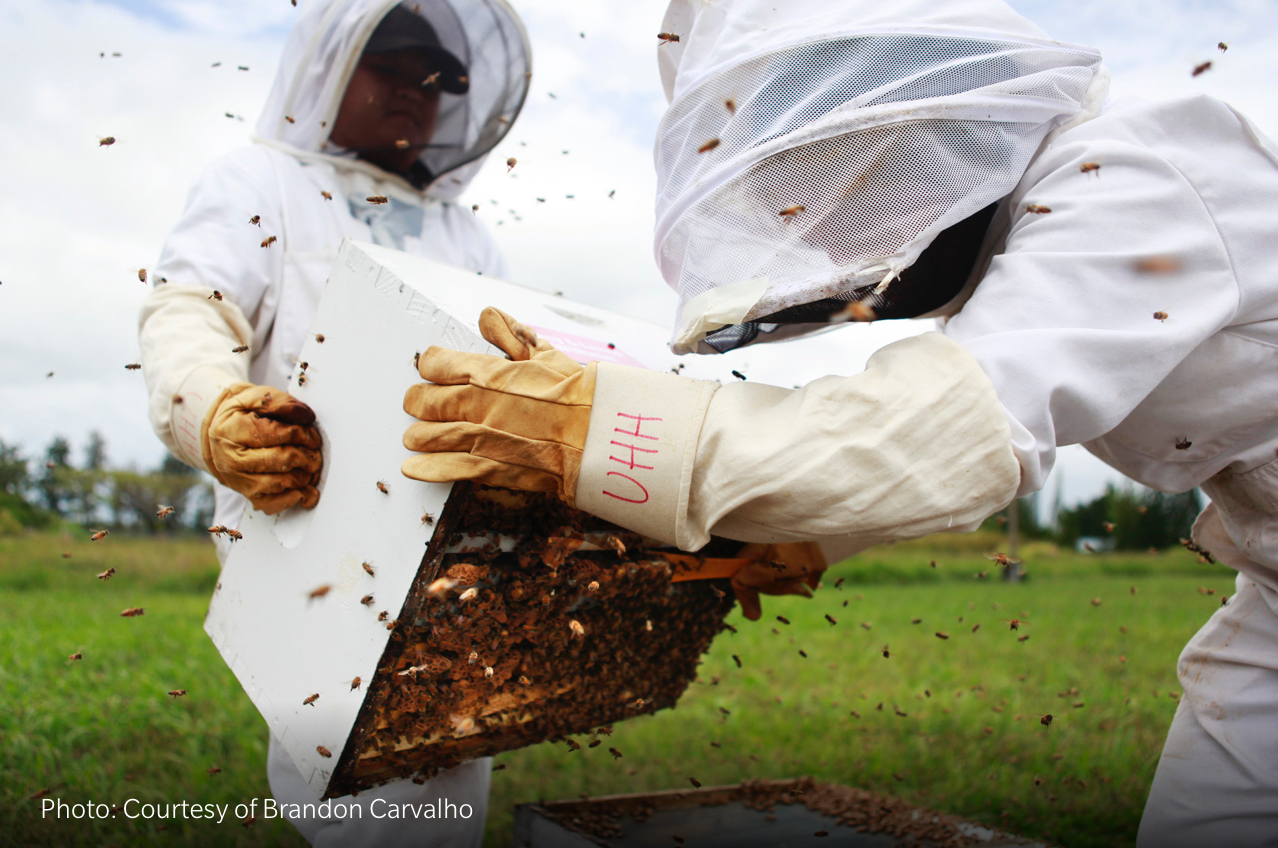
2. Beekeeping Lessons
Paradise Nectar ApiariesWainaku, Hawaii Island
ParadiseNectar.com/services/Beekeeping-Lessons
Since 2008, Jen Rasmussen, a self-described “bee guardian,” has been caring for bees without antibiotics or other treatments and teaching others how to do the same. She invites visitors to her apiaries for a hands-on workshop with honeybees, including protective gear, handouts and samples of honey and bee bread, pollen covered with nectar, which reputedly aids digestion. Book online.
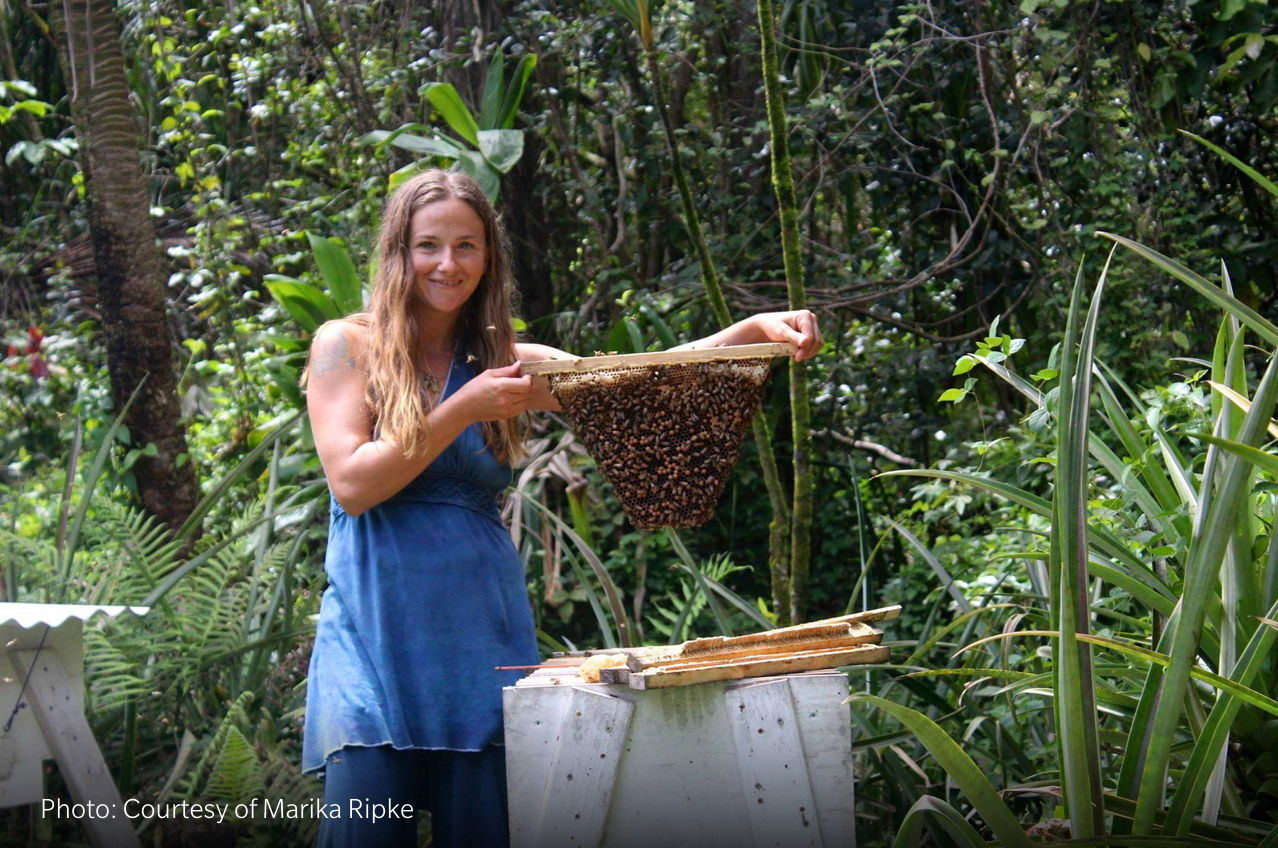
3. Hands-on Hives
Hilo, Hawaii Island
BigIslandBeekeepers.com
The Big Island Beekeepers Association sponsors a free introduction to beekeeping from 8:30 to 9:30 a.m. on the second and fourth Saturdays of every month, weather permitting. Meet in the back of the University of Hawaii’s College of Tropical Agriculture and Human Resource’s Research and Extension office, 875 Komohana Street.
After weeding and cleaning up around the apiary, participants inspect each hive. Advance reservations are recommended, so the instructor can ensure there are enough suits, veils and gloves for everyone. Call (805) 399-2422.
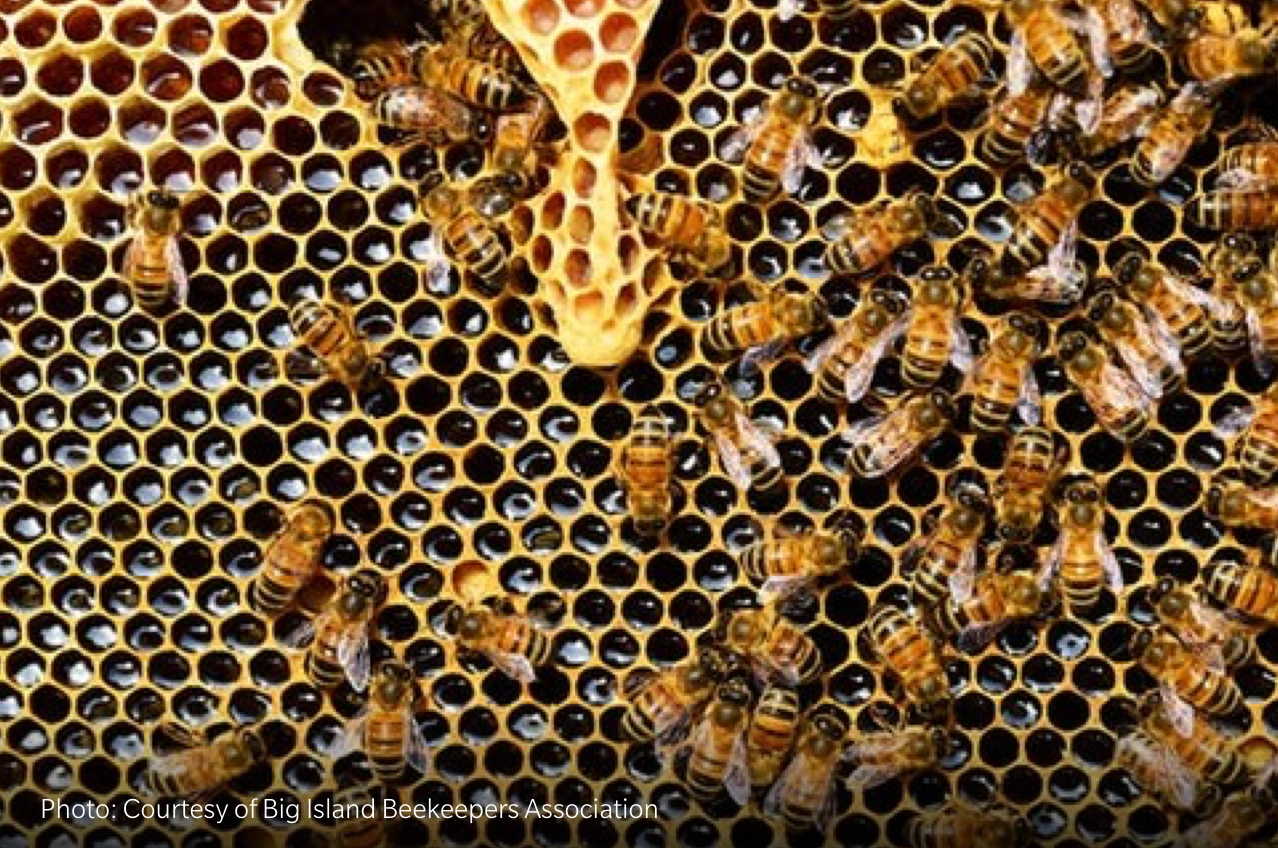
Maui
1. Bee House
University of Hawaii Maui CollegeKahului, Maui
www.ctahr.hawaii.edu/Maui/pages/Programs.aspx
The University of Hawaii Maui College’s College of Tropical Agriculture and Human Resources (CTAHR) is home to the Bee House, an observation hive set outdoors in a little structure that seats up to 15 people. Presentations there discuss honey bees’ life cycle, nutrition, social structure, the honey-making process and bees’ vital role as pollinators.
Before or after seeing the Bee House, guests can take a guided stroll through the surrounding gardens of aalii, ilima, plumeria, pua kenikeni and other tropical flowers, which are pollinated by bees. To schedule a group visit, call (808) 244-3242, extension 229.
Oahu
1. Beekeeper’s Visit Program
Manoa Honey CompanyManoaHoney.com
In addition to making quality honey, this small family-owned-and-operated business offers an outreach educational program for schools and community groups. How do bees make honey? Why are they important not only for cultivated crops but for plants in the wild? Why do worker bees sting but not drones? Do bees really dance?
A beekeeper will come to your meeting place with an observation hive and honey samples to answer those questions and more. Email yuki@manoahoney.com.
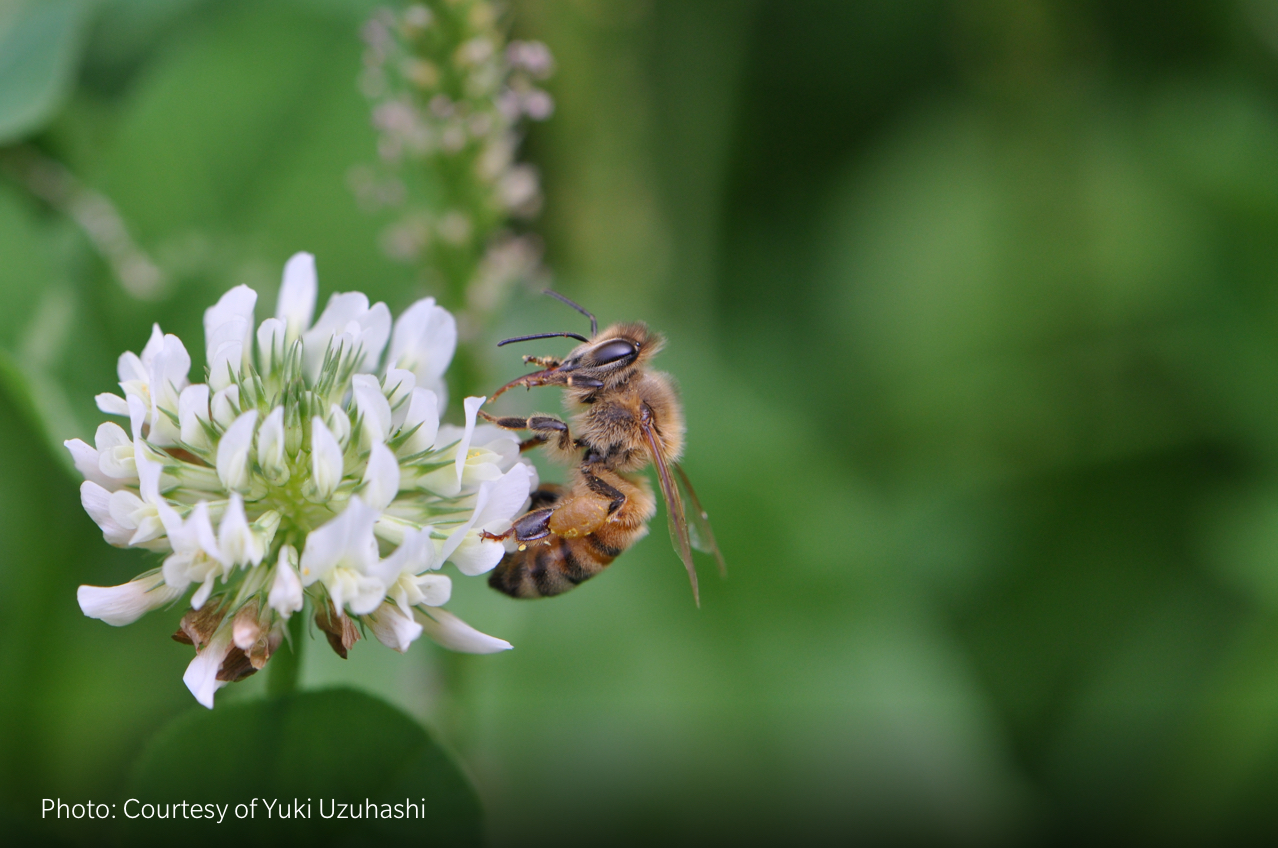
2. Introduction to Beekeeping
Meli LLCWaimanalo, Oahu
During this session, beekeeper Max Towey explains how to construct an apiary, including honey bee biology and disease, the equipment needed and proper locations for hives. It’s available to groups of at least 10 people; bee suits are provided for everyone.
Towey also offers this class a few times a year at Lyon Arboretum, which comes under the auspices of the University of Hawaii at Manoa. For kids’ events, including birthday parties, he brings an observation hive and a fun narrative for the appropriate age group. Email hawaiianmeli@gmail.com.
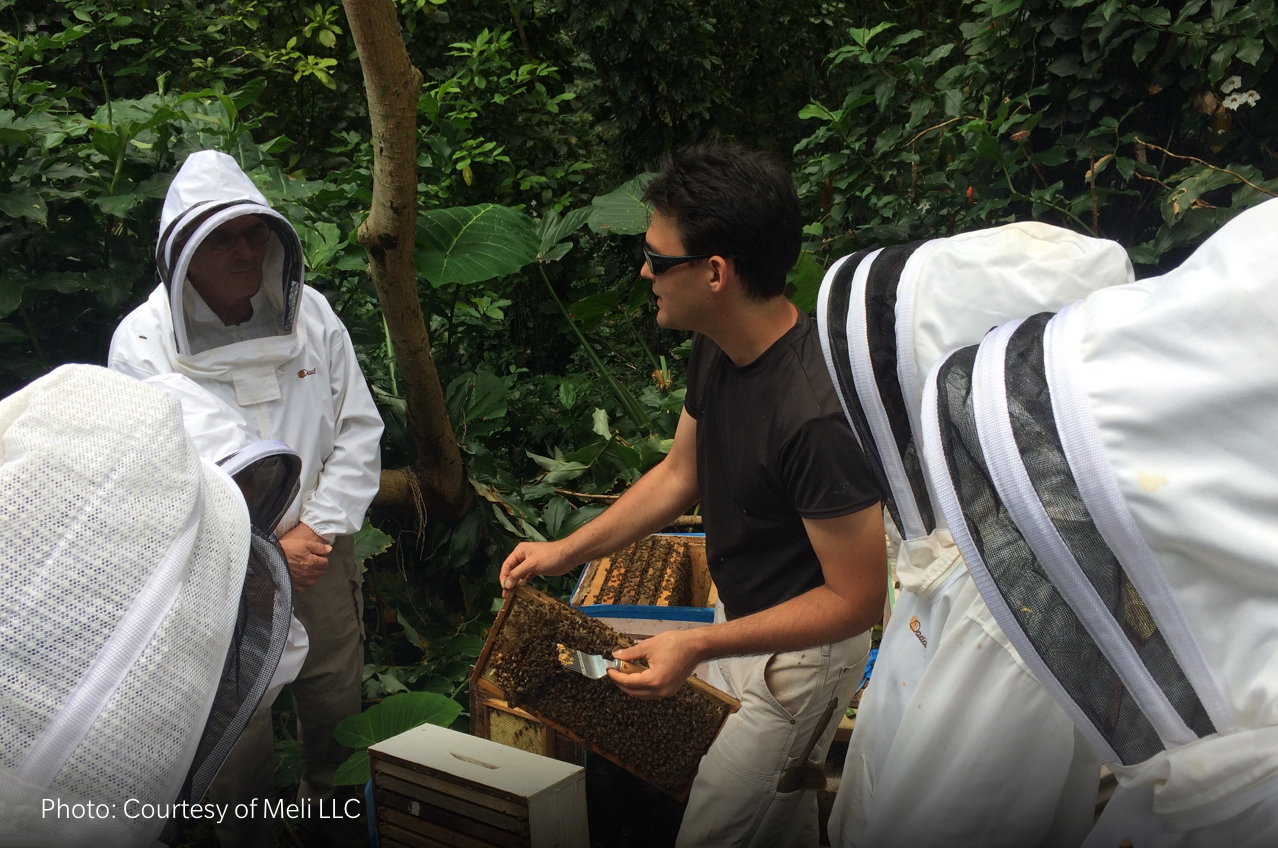
3. Pollinator Program
Beelieve HawaiiWaimanalo, Oahu
BeelieveHawaii.com
Jasmine Joy, founder of Beelieve Hawaii, takes her presentation to schools, garden clubs, restaurant staffs and other groups. She customizes each talk for the audience, but it always includes photos, examination of an observation hive and a discussion about the importance of bees as pollinators and honey producers. Call (808) 497-1743.
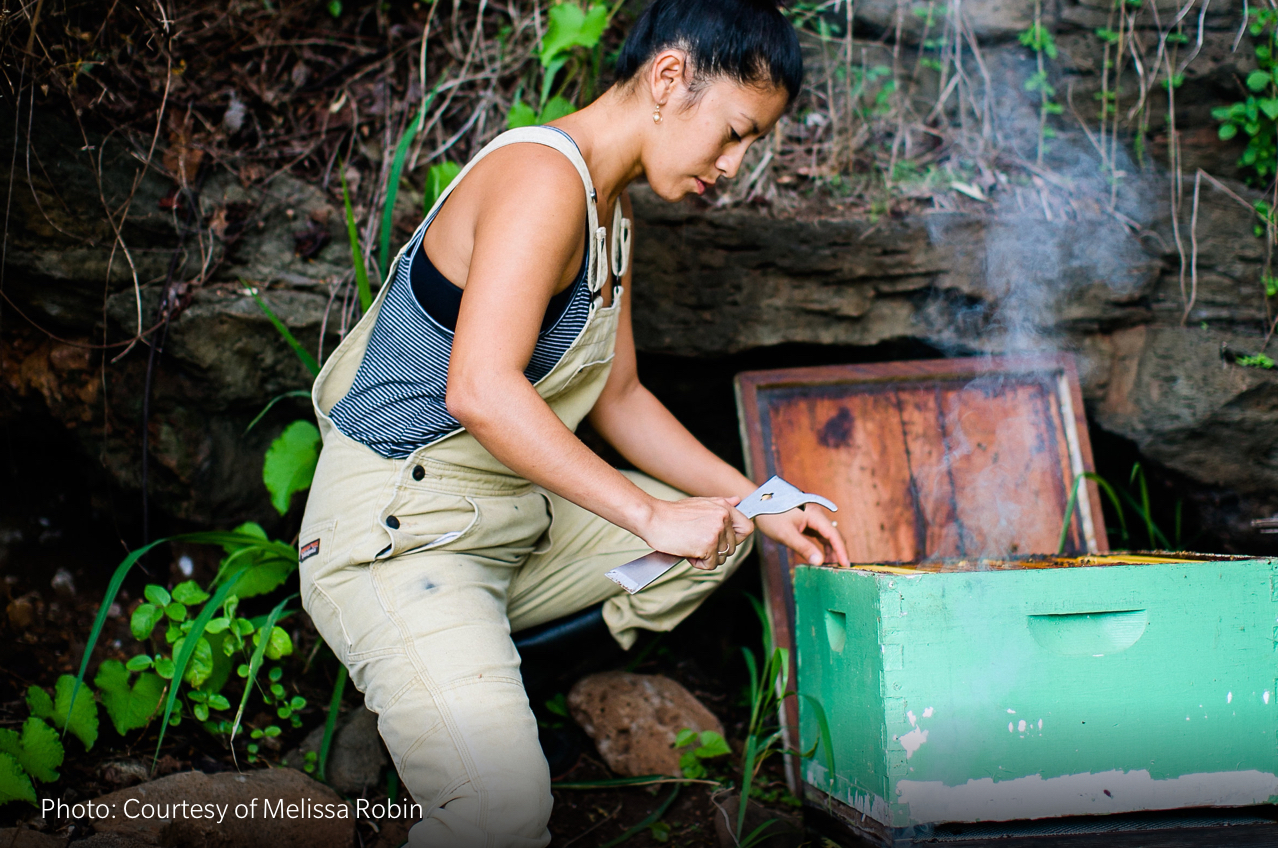
Kauai
1. Kauai Community College Apiary Project
Lihue, Kauaiwww.kauai.hawaii.edu/apiary-project
The public is welcome to the college’s apiary and lab to learn about bee and hive care, harvest honey and discover the many products derived from it. Hours are usually Mondays, Wednesdays and Saturdays starting at 10 a.m. Email kccbees@hawaii.edu for details.
In addition, a free or low-cost one-day beekeeping/honey class is offered once each semester through the Office of Continuing Education. Topics include Introduction to Beekeeping, Honey Harvesting and Products of the Hive (e.g., honey, wax, mead, lotion, lip balm, candles and baked goods).
KCC honey products can be purchased in the college’s bookstore and at the Saturday Kauai Community Market on campus if a month has a fifth Saturday. Proceeds help support the Apiary Project.
Sweet Success
Following is a partial list of Hawaii honey companies; there are dozens statewide. Their products are available online and at shops, supermarkets, festivals, swap meets, farmers’ markets and/or their own farm stores. Check their websites or email them for details.
Hawaii Island
1. Aha Honey House
www.ahahoney.com
2. Big Island Bees
https://bigislandbees.com
3. Hawaii Bee Company
www.hawaiibeeco.com
4. Hawaii’s Local Buzz
www.hawaiis.localbuzz.com/honey
5. Hawaiian Honey
telio@earthlink.net
6. Hawaiian Rainbow Bees
https://rainbowbees.com
It’s also based on Oahu.
7. Kalapana Gold
kalapanagold@gmail.com
8. Rare Hawaiian Honey Company
www.rarehawaiianhoneycompany.com
9. Steve’s Akaka Falls Farm
https://stevesakakafallsfarm.wordpress.com
10. The Honey Bee Company
www.thebeecompany.buzz
11. Wao Kele Honey
islebuzz@gmail.com
Maui
1. Da Beehive
www.dabeehive.com
2. Hive Mind Maui
http://hivemindmaui.com
3. Maui Bee Farm
www.mauibeefarm.com
4. Maui Bees
https://mauibees.com
5. Maui’s Best Honey
emillynch76@gmail.com
Oahu
1. All Hawaiian Honey
lkawamoto3@hawaii.rr.com
2. Green Valley Farm
greenvalleyfarm.hi@gmail.com
3. Manoa Honey Company
www.manoahoney.com
4. Nalo Meli Honey
www.nalomelihoney.com
5. Rhea’s Hawaiian Honey
raykar6@gmail.com
6. Tolentino Honey Company
www.tolentinohoneyco.com
Kauai
1. Bee Kind Apiary
bee.kind.apiary.kauai@gmail.com
2. Lee’s Bees
lnwilke@aol.com
3. Kapaa Honey Factory
conan@hawaiiantel.net
4. Kauai Community College Apiary Project
kccbees@hawaii.edu
5. Kauai Nectar
info@kauainectarco.com
6. Kauai Island Honey/Hanalei Bay Honey
kauaiislandhoney@hotmail.com
7. McPhee’s Bees
http://mcpheesbees.com
8. Miki Macs
mikimacs@hawaiiantel.net
9. M.Y. Kauai Honey
https://mykauaihoney.com
Molokai
1. Molokai Meli
www.molokaihoney.com








